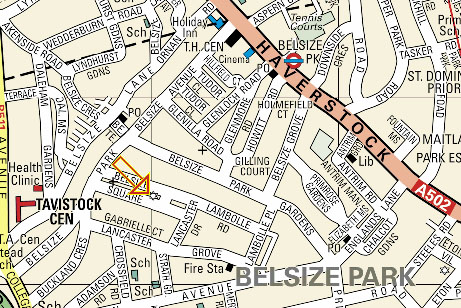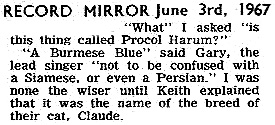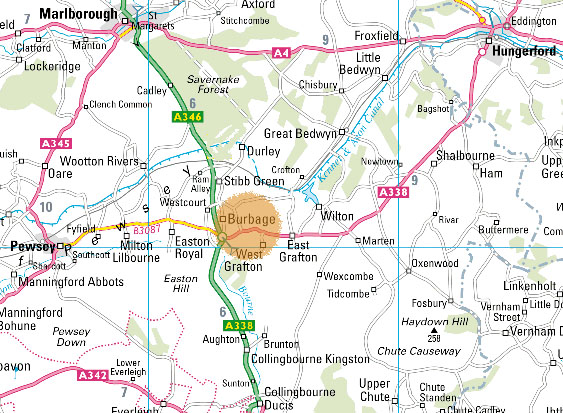Hardcore Carvers website
Procol HarumBeyond |
|
|
PH on stage | PH on record | PH in print | BtP features | What's new | Interact with BtP | For sale | Site search | Home |
|
[Do read Part One and
Part Two of this excellent story before
proceeding]
Polly Rubery e-mails me back almost immediately, and takes me
completely by surprise by giving me the former Elisabeth Coombs’s current married
name and a fairly recent home address. She also tells me I’ve been chasing yet
another false lead with regard to Elisabeth’s former partner: the man listed as
David Rhys-Rowberry on the 1965 electoral roll is actually David Robert Rowberry …
known as Bob. Bob, again. This looks promising … I have no idea how or why Polly
knows all this, and don’t feel I can ask because she already feels short-changed
when – with an instinctive protectiveness towards my ‘scoop’ that I recognise as
faintly ludicrous even while I’m exhibiting it – I offer my apologies, but
refuse to go into any further detail at this stage about the reason for my
research into the owners of a pedigree cat …
Bob the Hook
Hang on, didn’t I just 'phone the house of a David Robert Rowberry? Could that have been the right bloke after all? Apparently not. Polly
has provided me with a link to Hardcore Carvers, an arts
and crafts website via which the David Robert aka Bob Rowberry I want promotes
his highly inventive garden furniture, sculptures, ornaments and jewellery made
from scrap metal and other recycled materials. Known as ‘Bob the Hook’ after his
signature piece – yes, it’s a hook – he does the rounds of the summer festivals
selling his work and conducting workshops. There’s a picture on the site of Bob
looking grey haired, rustic and capable, and an e-mail contact for John Nethercott
& Co of Hereford, who act as his agents for internet and 'phone orders.
| Bob Rowberry's image from the
Hardcore Carvers website |
I e-mail Nethercott & Co, explaining that I’m researching a piece about Procol Harum and saying that I’ve heard Bob used to hang around with the band in the mid to late Sixties. Could they put me in touch? Annie Nethercott comes straight back with Bob’s mobile number. And, in her PS, asks me if I know that the band were named after Bob’s pedigree cat … is there anyone along this trail who doesn’t know more than I do?
Again, apparently not. Ian Marchant e-mails the same day to say the character he referred to as Ash in his book was someone he used to see around from time to time whose real name was … Bob Rowberry. ‘I must admit, he actually told me the story years ago, and I just popped it into our conversation in the book.’ Which is why the version of the tale in The Longest Crawl is just a little on the approximate side.
Anonymous
Roland Clare forwards an unexpected message from Keith
Reid: ‘I don’t mind answering a few questions concerning the cat.’ It’s a
one-shot deal. I have a choice: play dumb and hope for unprecedented spontaneous
revelation; or say what I’ve learned so far at the risk of prompting a total
shutdown. I go with the latter option … and get pretty much the latter result.
‘Much as I appreciate your interest in Procol Harum’s cat, unfortunately it was
all a long time ago,’ replies Reid. ‘What I can tell you with absolute certainty
is that we never considered calling ourselves the Pinewoods. I didn’t know Mafalda Hall’s cat was named Pandora, or even that she had a cat. I hope that’s
helpful.’
 |
Keith Reid, 2007 |
Well, only up to a point, Keith, but thanks, anyway. Bob’s former line of work is probably the main reason Reid and Brooker didn’t name him in the months immediately after they formed Procol Harum, or later, and is certainly why Ian Marchant invented a pseudonym for him. Members of the Rolling Stones were involved in high-profile drug busts in 1967. Guy Stevens – a friend of the Stones’ Brian Jones – was also busted that same year, then again in 1968, leading to a custodial sentence. Neither the band nor Bob needed that kind of attention at the time. And more recently … well, people in their sixties tend to have different values and responsibilities than people in their twenties.
The Naming
I decide not to go into such potentially problematic areas
when I 'phone Bob in case he Keiths me. But he turns out to be both open and
affable. He says he lives a traveller’s life these days, keeping his overheads
low and enjoying his work. Guy Stevens was indeed his main point of contact with
the band that became Procol Harum: he was friendly with Keith Reid, too, but met
him through Guy. ‘I knew Guy well. We hung around on the same scene. We used to
go clubbing together, and we shared the same vices, shall we say. I also knew
his wife, Diane. In fact, she came down here to visit about five years or so ago
to ask me about all this stuff herself, but I never heard anymore about it.’ Yet
another detective on the trail … which perhaps explains why Diane didn’t return
my call.
 |
The arrow shows Claude's new place, approximately |
By 1966, Bob tells me, he and Elisabeth Coombs – known as Liz – had moved from Worsley Road to Belsize Square, also in Hampstead, and even closer to Guy’s flat. ‘Guy was round one day saying he really had to find a name for this band, really going on about it. The pedigree papers for the cat happened to be on the table, and he was looking at them while he was talking to me. And then he stopped and said, “That’s it! That’s the name!”’ How did Bob feel when the band went on to have such a massive hit? ‘Amused! You would be if the pedigree name of your pet cat went on to become a household name.’
Claude
 In day-to-day life, Harun was actually known as Claude.
[confirmed in a recently-discovered clipping from
June 1967, right] ‘He
was a posh cat, so we gave him a posh, poncey name.’ What happened to him? ‘We
moved down to Wiltshire a year or so later. I left the cat with Liz while I
drove over to Afghanistan, because I used to go over there in those days ... And
when I got back she told me he’d just run off one day. Never saw him again.’
In day-to-day life, Harun was actually known as Claude.
[confirmed in a recently-discovered clipping from
June 1967, right] ‘He
was a posh cat, so we gave him a posh, poncey name.’ What happened to him? ‘We
moved down to Wiltshire a year or so later. I left the cat with Liz while I
drove over to Afghanistan, because I used to go over there in those days ... And
when I got back she told me he’d just run off one day. Never saw him again.’
Did Claude ever breed, or had he been neutered? ‘I wouldn’t have had it done,’ says Bob. ‘I mean, he was a tom. He still had balls. As to whether and where he put it about, I don’t know.’ I ask if there are any photographs of the cat with his owners. ‘What, a nice little family group shot of all three of us together smiling at the camera?’ he laughs. ‘I wouldn’t hold your breath. I’m not the type to keep photos. Liz might have something.’ They’ve been separated for many years, but are still in contact. Bob offers to ask her, but when I 'phone back as arranged he says there aren’t any photos.
Liz
I’ve already decided I need to contact Liz directly. Bob is
happy to talk about their famous cat, but he wasn’t Procul Harun’s official
owner, and I get the impression he wasn’t really that much of a cat person.
Following up Polly Rubery’s lead, I find a number for Elisabeth Rice, formerly
Coombs, and she responds to the introductory explanation of my quest with both
surprise and amusement. I don’t mention Bob, and neither does she.
Liz confirms that she first saw Procul Harun at Olympia, and then went down to Abingdon to pick him up from Mrs Vogt-Chapman. Also that the cat was indeed known as Claude. She tells the same story about the pedigree papers being on the table when Guy Stevens came to visit, but she is adamant that this happened after the move to Wiltshire. ‘It was a cottage in Westcourt, in the village of Burbage,’ she says. ‘It was called Half House, because half of it was thatched and really old and the other half wasn’t and had obviously been added much later.’
 |
Burbage: click map to explore |
As Guy Stevens spent some time in the early part of 1967 visiting Traffic at their cottage in the village of Aston Tirrold, then in Berkshire (now Oxfordshire) just 25 or so miles from Burbage, this is quite likely. And the remoteness of the location would explain why Procol Harum needed to be told their new name over the 'phone, and why it proved so difficult for their new management, New Breed, to trace the real cat a few months later.
|
What’s In a Name? ‘We’ve always been happy with our name,’ Gary Brooker told the Acoustic Storm in 2003. ‘I suppose every band is. I’m just glad we weren’t called Strawberry Alarm Clock or something. It would’ve been a bit embarrassing 35 years later.’ Four years later still, he says, ‘Mind you, even back when we started, Private Eye used to write about this group called Procol Turdum.’ ‘We never even questioned it, never even thought if it was a good name, we just went ahead with that suggestion,’ Keith Reid told Adam Dolgins in 1993. ‘I think it was a silly name. And the trouble with it is that people have a great deal of difficulty understanding what it is. Broken Arm, Purple Horrors ... It’s very difficult for people to get the hang of.’ ‘I thought it was pretty stupid,’ says Matthew Fisher. ‘I still do. It's daft having a group name that nobody – including the band – knows how to spell. Americans not only can’t spell it, they can’t pronounce it properly. They call it Prockle Hair-um.’ |
Rosemary Hale’s informed guess about the unlikelihood of Procul Harun having offspring turns out to be correct. ‘He’d been neutered, so there were no kittens,’ says Liz. She also contradicts Bob’s version of what happened to Claude. ‘He lived to be a happy old cat of eight or nine,’ she says. ‘There aren’t any photographs, I’m afraid. When I left the cottage, I put everything in storage, and I don’t think I ever got around to getting it back again.’
She remembers Claude with fondness. ‘I’d say his main characteristic was that he hated to make a fool of himself. And he was quite clumsy, so he often did. I bet the band won’t be too happy to hear that about their namesake! When we lived in our basement flat, and we had the top of the sash windows open, he’d climb on top and stretch out. They were so old and loose that they’d rattle down and spill him off. He’d always look highly embarrassed.’
Confirmation
When I write up the above and send it to him, Roland Clare
confirms, ‘I am indeed the person who had already spoken to the cat ladies you
interviewed.’ He also forwards me the e-mail that set him off on his own
investigation. It was sent in September 2002 by cat expert Alan Edwards, who had
come across the 'Beyond the Pale' site by accident when searching the web for
pedigree information: ‘I actually knew Mrs E Vogt-Chapman, who bred Procul Harun,
and he was a Blue Burmese. Procul was chosen by Mrs Vogt-Chapman as her
breeding prefix, or trademark. All of the cats she bred could be identified as
being of her breeding by having Procul at the beginning of their names. Procul
Harun was definitely neither Devon Rex nor Siamese. The photograph supposed to
be the actual cat is that of quite a poor quality Abyssinian!’ Poor quality?
Avert your gaze, Mafalda!
Given their much longer acquaintance, it also comes as no real surprise to me to learn that Keith Reid had also been a little more forthcoming with Roland than he was prepared to be with me. ‘Keith told me categorically in the last week of February 2007 that – from my notes – “Procol Harum, the cat, belonged to Bob Reece-Rowberry [spelling uncertain],” and Gary confirmed it the next day,’ he e-mails. ‘One loose thread, however, is that many years before – in Denmark some time – Gary told me, “It was someone who played with the Incredible String Band at the Albert Hall in 1969.” Also, “Bob” (as in Bob Hope) is one of Gary’s playful rhyming-slangisms for “dope”.’ The fact that Roland had just been too busy with his day job to get into print with all this makes me feel a whole lot better … yeah, right. (In fact, he very generously offers to step down, and allows me whatever remaining small glory there might be by agreeing to publish this rambling account on 'Beyond the Pale'.)
When I share my findings with Polly Rubery, I find she had no prior interest in either the cat or the band – though the organist did play A Whiter Shade of Pale at her best friend’s wedding in summer 1971 – but it transpires she knows plenty more about the extended Rowberry clan than she’s already told me. For instance, Elisabeth Coombs really was a Mrs – rather than a Miss, as I’d assumed – during the period she lived with Bob and became the owner of Procul Harun. She had married Mr Coombs in 1963, in Nottingham.
Rhys
Armed with the information I gave her about Bob’s appearance as
David Rhys-Rowberry in the 1965 electoral roll for Worsley Road, Polly has
checked the London BT 'phone books online at the Ancestry website she subscribes
to, and found a 1966 listing for ‘Rhys-Rowberry, DR’ at 25 Belsize Square, both
confirming and adding a little more detail to the information Bob gave me. So
that’s all four (known) homes of Procul Harun accounted for.
Polly tells me that that the first David Robert Rowberry I 'phoned, and whose wife I talked to, is – almost unbelievably – the younger half-brother (by nineteen years) of my David Robert Rowberry. (Which brings to mind Brian Jones’s bizarre decision to name two of his sons by different mothers Julian … though Jones at least rang the changes with their middle names.) ‘In fact all my research into Bob was inspired by the other David’s sister, Diane,’ e-mails Polly. ‘Their mother married their father during the War, and the children did not discover anything about his first marriage (which produced Bob) until Diane started researching her family history after her father died.’
Polly has a copy of Bob’s parents’ marriage certificate, on which there is no mention of Rhys or Rees, so she was initially puzzled why Bob would list himself as David Rhys-Rowberry on the electoral roll, or be known as Bob Rhys-Rowberry to Keith Reid and Gary Brooker. However, shortly after our exchange of information, she was sent details of a subsequently cancelled marriage entry for Bob’s parents – made earlier the same day as the official entry – in which the details are slightly different … in the first entry, Bob’s father (to be), Alfred Edwin Rowberry, lists himself as Edwin David Rhys Rowberry, and lists his father, known as Wyndham Rowberry, as David Rhys Rowberry. His obsession with the name ‘David’ remains inexplicable, but there does turn out to be a precedent for ‘Rhys’ … phonetically, at least. Polly tells me that Bob’s grandfather is entered as Wyndham Rowberry on his birth and marriage certificates, but as Wyndham Rees Rowberry on his death certificate. This was presumably in honour of his mother, who was born Elizabeth Rees (still with us?). So Rees/Rhys was indeed a family name – if not really an official one – going back four generations.
McGregor
Bob’s father remarried, as we know – hence the second David
Robert Rowberry – but so did his mother, this time to a Canadian soldier named …
Fred Jack McGregor. How does that song go again? ‘McGreggor was a soldier brave
…’ Completely
unexpectedly – for me, anyway – the McGreggor myth has suddenly acquired
legitimacy. My earlier 'Beyond the Pale' searches for
information on this topic were limited to ‘McGreggor’. Belatedly trying
‘McGregor’ in the search engine turns up a 1996 Progression interview
in which
John Collinge asked Gary Brooker to name the owner of the cat, and Brooker
replied, ‘I don’t know his name. I can’t remember. It’s a friend of Guy Stevens,
a guy I used to score dope off ... Sandy McGregor’s brother, it was. Don't
remember his first name.’
It’s understandable that anyone reading that interview would presume that the brother’s surname was also McGregor, and maybe also confuse the humper of backlines with the supplier of exotic herbs. When I check back in with Polly, she confirms that Bob’s younger half-brother was indeed named Sandy … and adds yet another twist. They did share the same surname for a while, but that surname was Rowberry. Sandy was listed thus in the register of births, his parents not being free to marry until the following year, at which time he became a McGregor.
I e-mail Roland Clare and ask him if the name Sandy McGregor rings a bell. As luck would have it, he’s due to 'phone Gary Brooker that very night, and passes on the question. ‘He thought Sandy McGreg(g)or and Bob were cousins; but he reckons half-brothers sounds pretty likely, too,’ Roland reports back. ‘He says the two men were definitely quite close: they travelled through Afghanistan together in the late 60s, which was quite a daring escapade at that time (still is, I guess!). The song is decidedly not about Sandy, though he would have heard it, as he was a roadie for the band for several years, starting in 1967. Gary reckons Keith will just have taken the name, realised it was good for singing, and written the narrative about “a Scotsman who got it all wrong” without further reference to the true facts about the roadie in question.’ That clinches it. Sounds like Sandy got the roadie gig via Bob. McGreg(g)or, climb in the back next to Rhys, Ash, Rowberry and Coombs. And let’s get back on track …
Lamont Blue
Burmaboy
It occurs to me to ask the Burmese Cat Club if
there might be a photo of Procul Harun in the breeders’ records. Sadly, no. It
appears Gary Brooker was right when he said no-one was able to take – or, at
least, keep – the cat’s picture. Rosemary Hale does supply a snap of his
grandsire, Lamont Blue Burmaboy, though, which she says should give some idea of
what Harun looked like in his prime. A bit pompous, is the answer, and like he’s
just about to fall out of a tree.
|
Procul Harun’s grandsire, Lamont Blue Burmaboy |
|
The Vanishing Cat
The discrepancy between Bob and Liz’s accounts of Procul
Harun’s end niggles. Eight or nine isn’t old for a Burmese, so it would have
been unusual for him to die of natural causes at that age, as Liz suggested. A
few days after my first conversation with her, I 'phone her back, and tell her
Bob’s version of events. She pauses for thought. ‘I’ve had a lot of cats over
the years, and sometimes they do get muddled up a bit,’ she says. ‘Do you know,
I think Bob’s probably right, and he just went missing.’ That being the case,
the most likely outcome is that he was killed almost immediately by something
wild or motorised, but it is just possible that he got lost and was taken in
elsewhere – or was even stolen –
and lived for many
more years.
So the ultimate fate of Procul Harun, that cat with the most enigmatic of reputations, is still unknown. In real life, though – as long as his real life lasted – he was a bit of a klutz called Claude. He might not have left behind a dynasty, or even a photograph, but – in the fine tradition of another famous and mysterious cat – at least a grin remained long after the rest of him had gone …
|
|
Exit the cat |
This article is
© Marcus Gray October 2007, and is reproduced by his kind permission.
Enquiries, further information etc, to red.barn at yahoo dot co dot uk
Marcus thanks everyone mentioned,
especially
Rosemary Hale and Roland Clare –
and Polly Rubery, who would like to invite anyone
with further information (or insatiable
curiosity) about the Rowberry family to
contact her at rowberry@one-name.org
In addition to an AWSoP retrospective for Classic Rock, Marcus Gray is the author of the sometimes-acclaimed Last Gang In Town: The Story And Myth Of The Clash, the occasionally-remembered It Crawled From The South: An R.E.M. Companion, and the deservedly-forgotten London's Rock Landmarks.
The Name of the Cat | The previous instalment of this story
|
PH on stage | PH on record | PH in print | BtP features | What's new | Interact with BtP | For sale | Site search | Home |